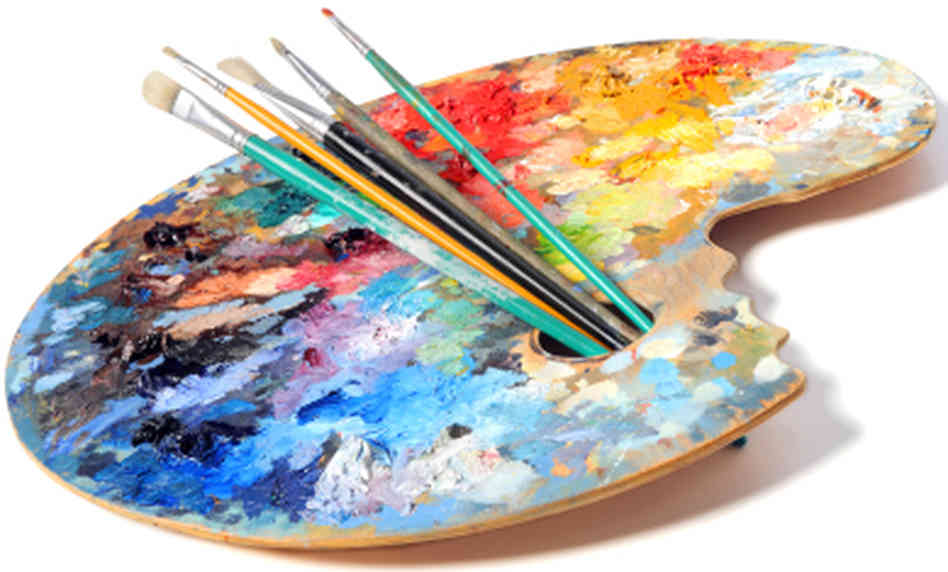How Trump Art Influences Public Perception of Political Figures
Exploring the Diverse World of Artistic Expression: From Surrealism to Abstract Realistic Look
In the world of creative expression, from the dreamlike landscapes of surrealism to the elaborate play of light and kind in abstract realism, musicians have continually pressed the borders of creative thinking and imagination. As we check out the complex globe of art, we are offered with a tapestry of styles, strategies, and ideologies that challenge our understanding and provoke consideration.
Surrealism: Unleashing the Subconscious
Surrealism, an avant-garde imaginative motion of the 20th century, explored the midsts of the subconscious, unveiling a globe of dream-like imagery and unusual juxtapositions. Pioneered by musicians like Salvador Dali, René Magritte, and Joan Miró, Surrealism sought to challenge the conventional ways of comprehending and seeing art. With techniques such as automatism and dream analysis, Surrealist artists aimed to use the subconscious mind to reveal covert realities and needs.
Among the crucial elements of Surrealism was the focus on the unreasonable and the exceptional. By integrating unanticipated aspects in their jobs, Surrealist artists intended to produce a sense of disorientation and surprise in the customer. This disturbance of logic and reason was indicated to prompt a much deeper expedition of the subconscious and the enigmas of the human mind.
Abstract Realistic Look: Redefining Understanding
Challenging traditional artistic limits, Abstract Realistic look redefines assumption through the combination of recognizable aspects with abstract forms. This cutting-edge technique to art combines the representational accuracy of realistic look with the creative flexibility of abstraction, offering viewers a special visual experience that triggers them to question their understanding of truth.
In Abstract Realism, artists strive to record the significance of their subjects while likewise instilling their collaborate with a sense of depth and complexity with abstract aspects. By blending the knowledgeable about the unfamiliar, these musicians invite target markets to involve with their items on several degrees, motivating them to explore the nuances of type, texture, and color.

Cubism: Fragmenting Truth
Using fragmented perspectives and geometric types, Cubism transformed the imaginative representation of fact in the early 20th century. Developed by Pablo Picasso and Georges Braque, Cubism looked for to challenge conventional notions of perspective and depiction. By damaging down objects and figures right into geometric forms and presenting them from several viewpoints concurrently, Cubist artists aimed to record the essence of the subject instead of its actual appearance. This technique not just deconstructed reality however likewise stressed the monotony of the canvas, leading the way description for future abstract art movements.

Cubism can be categorized into 2 major stages: Analytical Cubism, identified by monochromatic shade systems and detailed, fragmented forms; and Synthetic Cubism, which incorporated collage components and brighter colors into the compositions. With these distinctive phases, Cubism influenced not only painting yet additionally design, sculpture, and style. trump art. Its impact reverberated across the art globe, motivating musicians to check out brand-new methods of analyzing and representing the world around them
Expressionism: Feelings on Canvas
Discovering the midsts of human emotions with meaningful and vivid brushstrokes, Expressionism became a profound imaginative movement in the early 20th century. Unlike previous art movements that focused on depicting the external world, Expressionism explored the internal realm of the musician's psyche, intending to evoke raw feelings and provoke visceral feedbacks from audiences.
Expressionist artists, such as Edvard Munch, Egon Schiele, and Emil Nolde, denied standard concepts of elegance and realistic look in favor of distorting kind and color to share subjective sensations. Using overstated brushwork, vibrant shades, and altered numbers aided create a sense of anxiousness, alienation, or interest in their jobs.
Among the most renowned examples of Expressionism is Munch's "The Scream," which captures the extreme stress and anxiety and anguish of contemporary life via its swirling, altered figure against a blood-red skies. Via their emotionally billed jobs, Expressionist musicians looked for to challenge standard artistic norms and provide a home window right into the turbulent midsts of the human heart.
Contemporary Art: Advancing Point Of Views

One of the go to the website specifying qualities of contemporary art is its constant development and capacity to adapt to changing cultural landscapes. Musicians are progressively including innovation right into their technique, blurring the lines in between the physical and digital realms. This blend of mediums permits ingenious means of storytelling and engaging with audiences in a much more interactive manner.
Furthermore, contemporary art typically works as a system for social commentary, resolving pushing concerns such as identity, national politics, and the setting. Musicians are using their work to provoke and spark important discussions idea, clarifying the intricacies of the globe we reside in. As point of views proceed to develop, modern art continues to be a prominent and vibrant pressure in forming our cultural landscape.
Final Thought
Finally, the globe of artistic expression includes a wide variety of designs and activities, each with its very own one-of-a-kind strategy to sharing meaning and emotion. From surrealism's exploration of the subconscious to abstract realism's redefining of perception, and from cubism's fragmentation of reality to expressionism's portrayal of emotions, art continues to advance and test point of views - trump art. Contemporary art shows the ever-changing globe we live in, using new ways to translate and understand the complexities of our fact
As we explore the complex globe of art, we are presented with a tapestry of styles, strategies, and viewpoints that test our understanding and provoke contemplation. Its influence reverberated across the art globe, inspiring musicians to discover new methods of representing the world and interpreting around them.
